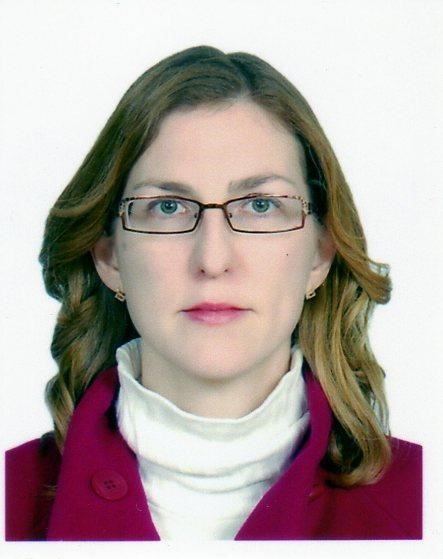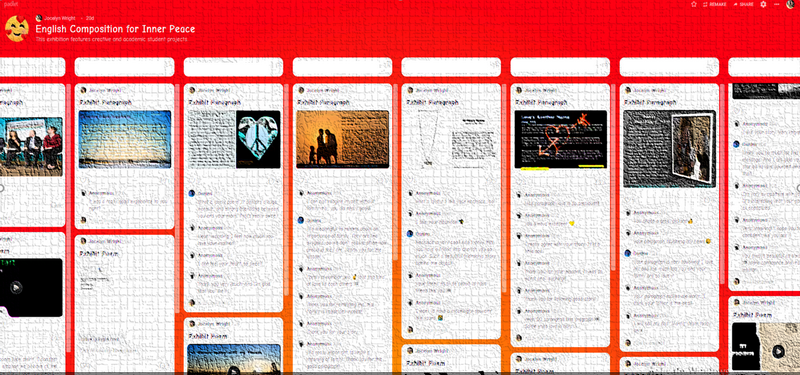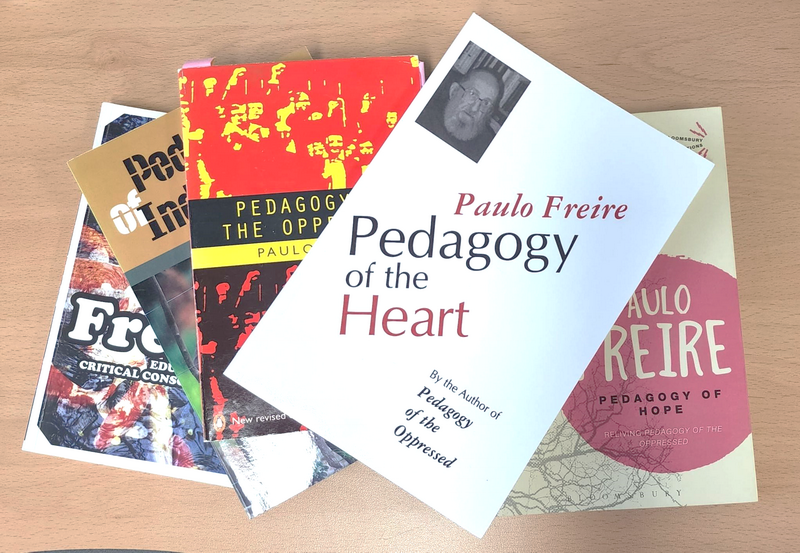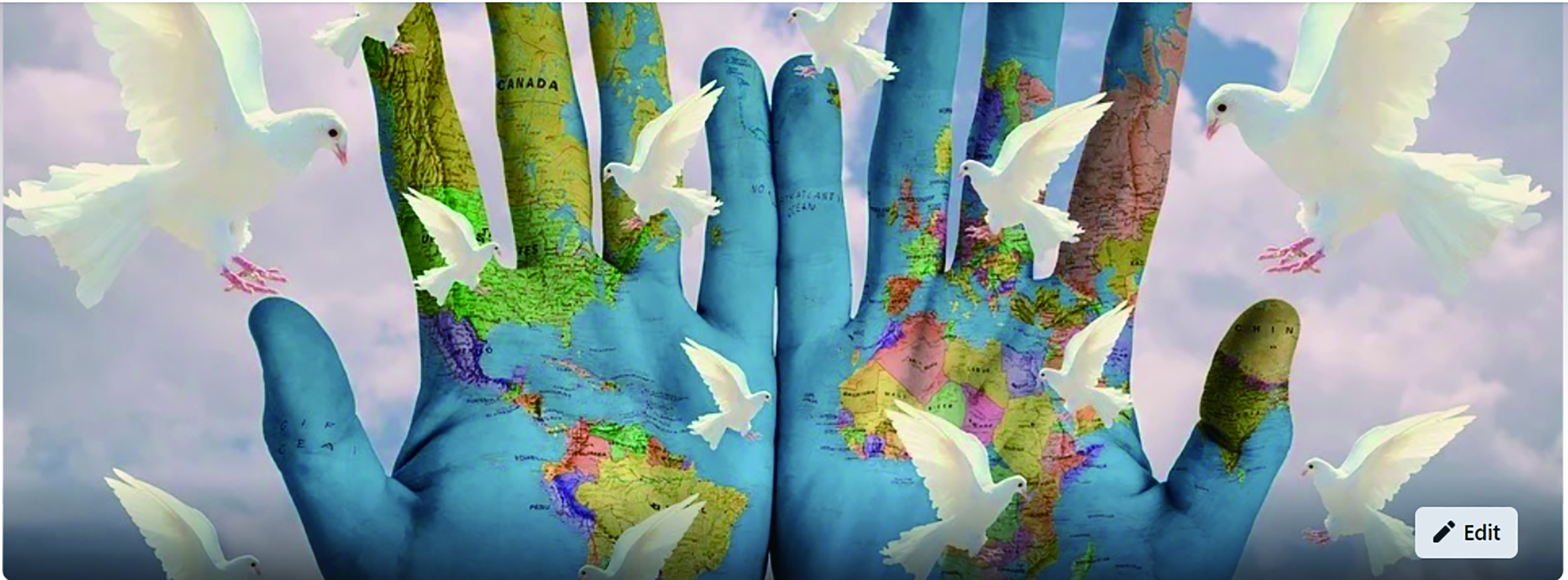Peace Linguistics and Its Connections to TESOL
An Interview with Jocelyn Wright
We are all familiar with the terms linguistics, applied linguistics, sociolinguistics, and psycholinguistics. But peace linguistics may not be so firmly seated in our lexicons. To find out more about this, we turned to Jocelyn Wright for an interview. You may remember that earlier she spoke with us about teacher and student well-being in this column [Gwangju News, July 2021]. Jocelyn is a longtime member of Korea TESOL (KOTESOL) and has been working in the Department of English Language and Literature at Mokpo National University for quite a number of years, too. Below is our interview. — Ed.
KOTESOL: Annyeong-haseyo! Thank you for making time to meet again, Jocelyn. I believe your teaching focus has changed quite a lot over time – from a focus on teaching English skills courses to teaching content courses in English. To start things off today, could you tell us what the biggest differences have been for you? And maybe the biggest joys and challenges?

Jocelyn Wright: Yes, my work has changed quite a lot! When I started off as a lecturer, I mainly taught conversation courses in the liberal arts program and writing courses to English language and literature and English education undergraduate majors, but I also taught elementary school children in the after-school program and at camps, facilitated non-credit adult and lifelong learning classes, and participated regularly in in-service teacher training and other special programs. After becoming a professor, I have primarily taught and advised undergraduate and graduate-level students, and while I mostly focused on content in the early years, more recently, my courses have been about 60 percent content-based and 40 percent task- or project-based. However, I still adopt a skills-based approach when teaching Spanish. Usually, when I design a new English course, my focus is on using the language while developing other skills (e.g., creativity, computer literacy, research, nonviolent communication [NVC], leadership, peacebuilding, etc.) that are useful for students’ futures. Tasks and projects are built in because, following John Dewey, I want to ensure that students learn by doing. After all, skills require practice.
The biggest challenges? Well, coming up with or adapting relevant, stimulating, and level-appropriate materials. Scaffolding project work to maximize efficient learning and minimize stress is another, and evaluating projects can take more time and energy. Nevertheless, when well planned and led, such work generally leads to more meaningful, more creative, and higher-quality work, which students are proud to exhibit at the end of the semester, such as the mounted paragraphs and animated poems they prepared for my English Composition for Inner Peace course.

KOTESOL: Speaking of peace, I have noticed that you are still quite active on Facebook facilitating your group, Peace Linguistics. Would you explain exactly what “peace linguistics” is and how and why you have become so interested in this area of “linguistics,” and why you started the group? By the way, I purposefully started off this interview with a Korean greeting, as it seems to tie in nicely with peace linguistics – “Are you at peace?”
Jocelyn Wright: Yes, it does. Through the group, I am trying to stimulate interest and involvement in this still relatively unknown interdisciplinary field. Peace linguistics or PL, as the name suggests, connects linguistics and peace studies. As far as linguistics is concerned, it belongs to the area of applied linguistics, which, as readers may know, covers many areas, including language teaching. PL means different things to different people, but one inclusive way to explain it is to imagine we are looking at what we do through a peace lens and trying to find strategies to reduce or transform violence and abuse caused by our communicative behaviors on the one hand and trying to cultivate cultures of peace and justice on the other, and this at various levels (micro, meso, macro) and across domains (psychological, social, cultural, political, ecological). Some may consider PL particularly relevant right now given the conflict between Russia and Ukraine, but PL is not only concerned with wartime communication. On a daily basis, we may talk to ourselves or others in ways that are not favorable to our well-being or harmonious relationships.
Our values, attitudes, thoughts, and beliefs are shaped, mediated, and conveyed through language, so language awareness is key, for instance, to countering prejudices and stereotypes we hold as well as deficit mindsets. Metaphorically, van Lier (1995) says we are often not aware of the language around us, and it can hurt us and harm others, much like polluted water poisons fish. I studied linguistics as an undergraduate, but studying something and living it are not the same. I was quite focused as a language learner and novice teacher on comprehension, accuracy, fluency, and appropriateness. Gradually, I started to become more self-aware and more intentional in my language use. While absorbing the eye-opening work of Marshall Rosenberg on NVC, I serendipitously discovered the illuminating work of Francisco Gomes de Matos, a key pioneer and vocal advocate of PL. After searching some time for meaning, it just seemed so obvious that peace was the motivation for doing, as well as the means to achieving, what I wanted to do. (By the way, if interested, please read the biographical magazine article I wrote about him [see Wright, 2019]).

KOTESOL: Who are the members of your Peace Linguistics group, and what topics are discussed in the group? Also, is it more about linguistics or more about peace and peace-building?
Jocelyn Wright: Well, as you can probably imagine, PL is most likely to be successful if developed by scholars, policymakers, curriculum planners, materials developers, teachers, and activists from a wide variety of backgrounds who share the goal of peacebuilding. At the moment, most members of this international group probably have one of three major orientations: one more focused on linguistics (whether more theoretical, descriptive, or applied), one on education (e.g., peace, conflict transformation, and NVC, or critical pedagogy, social justice, and sustainable development), and another on peace language education or peace language teacher education. Some members who have joined, however, are specialized in intersecting disciplines, such as psychology, sociology, diplomacy, literature, or art, just to name a few. Depending on their orientations and experiences, they may contribute to enriching this field in diverse ways, so discussions encompass a broad range of topics that are historical, current, or anticipatory, and actions may be creative and/or critical.
KOTESOL: Do you, or do you plan to, do any peace linguistics-related presentations or workshops with groups of teachers – such as groups of expat English teachers?
Jocelyn Wright: Over the past two years, I have given a number of presentations related to peace linguistics both for linguists and language teachers in South Korea and abroad. As well, I have facilitated or supported a few online research article discussions and book clubs. With other group members, I have also given a workshop and participated in two conference panels, and there will be more to come!
KOTESOL: Are you able to incorporate peace linguistics into your current university courses – such as devoting special class time to presenting or discussing the topic, or possibly doing some type of project work with the students?
Jocelyn Wright: One essential thing about being a peace linguist is trying to be intentional in our activities. Since 2017, I have been incorporating NVC into my undergraduate courses, and I officially opened an NVC course in 2019. Then, in 2020, I began teaching an Intercultural Leadership course where I emphasize compassionate leadership and present case studies about compassionate careers. Last year, I taught a topical graduate-level course on PL, and this year, I started transforming my composition courses into English for Peacebuilding Purposes writing courses.
Many teachers may not have the freedom I have to design their own courses. In these cases, doing what you recommend – devoting class time to presenting, or preferably getting learners to critically reflect upon, dialogue about, and negotiate the topic, or doing project work – can be a great alternative. I think it is important for the teacher, though, to gain an understanding of what peace and peacebuilding are, so that efforts are well directed. I have been devoting a lot of time to reading extensively about this topic over the past years.

KOTESOL: I know you rarely teach English skills courses these days, but for our readers who do teach skills courses and TESOL courses, could you give them some ideas as to how they might incorporate peace linguistics into their teaching?
Jocelyn Wright: Two areas of linguistics that are particularly pertinent are pragmatics and sociolinguistics. For example, we may want to emphasize certain functions over others. It is often beneficial, though it is not always easy, to ask questions or seek clarification rather than make assumptions, to make observations rather than evaluations or criticisms, and/or to make requests rather than demands. When considering language input (verbal and nonverbal), we may choose to raise awareness of the variants used and introduce and celebrate other varieties, or we may highlight inclusive language.
As we teach, we may wish to keep in mind how we empower students to communicate. This is an area I have been focusing on self-developing over the past years, in line with Betty Reardon (1988/2021), who recommends we be “edu-learners,” or those who continuously try to learn while assisting others. Relational communication, which we would ideally model, can lead to harmony (via violence transformation or prevention), so rather than just teaching listening for details or for gist, we can emphasize mindful and empathic listening, and encourage students to express themselves in constructive and positive ways. Similarly, we can focus on teaching benevolent reading and audience-sensitive writing. Paying attention to and trying to improve the clarity of our instructions, and the kindness and helpfulness of the feedback we give are additional approaches. Then, there are the more education-focused aspects. Lots of practices we already do, such as storytelling, role plays, collaborative problem-solving, and reflective practice may serve in this way, too, if humanizingly envisioned and implemented.
KOTESOL: Before the Peace Linguistics group was born, you were quite instrumental in organizing the Gwangju-Jeonnam KOTESOL Chapter’s Reflective Practice Group. And you also founded and led KOTESOL’s Social Justice SIG (special interest group). What is it that compels you to become so active, or proactive, in these areas?
Jocelyn Wright: Thanks, yes, when I was teaching in South Korea the first time, KOTESOL did not have a reflective practice (RP) group. I heard about RP after I left to pursue a Master’s in Education in France. When I came back here, I learned that this group was developing, and I was keen to participate, but Seoul and Daejeon were too far away, so I started a local group with support from a few Gwangju-Jeonnam KOTESOLers. Over time, my reflection became more critical as I began to examine strands of multicultural and intercultural education, social justice education, critical pedagogy, post-method pedagogy, global Englishes, etc. At the time, I did not make the connection between these and peace, but I came full circle after getting into caring/relational approaches and NVC, which, as I said earlier, led me to PL.
What compels me to learn about these areas and create these groups? I guess a vision of a better me and a happier and healthier world, along with the optimism and hope that this is possible with deliberate individual, as well as collective, effort. Perhaps, this is owing to the fact that I have been quite influenced by Paulo Freire’s various pedagogies.
KOTESOL: Thank you, Jocelyn, for your insights into peace linguistics, non-violent communication, and compassionate leadership, and how to apply them to the field of teaching. Annyeonghi gyeseyo
(안녕히 계세요, Stay at peace).
References
Reardon, B. A. (2021). Comprehensive peace education: Educating for global responsibility (2021 ed.). Peace Knowledge Press. (Original work published 1988)
van Lier, L. (1995). Introducing language awareness. Penguin Books.
Wright, J. (2019). Peace linguistics: Contributions of peacelinguactivist Francisco Gomes de Matos. Humanising Language Teaching, 21(6). https://www.hltmag.co.uk/dec2019/peace-linguistics
Gwangju-Jeonnam KOTESOL Upcoming Events
Check the Chapter’s webpages and Facebook group periodically for updates on chapter events, online and in person, and other KOTESOL activities.
For full event details:
• Website: http://koreatesol.org/gwangju
• Facebook: Gwangju-Jeonnam KOTESOL
Interviewed by David Shaffer.
Photographs courtesy of Jocelyn Wright.
The Interviewer
David Shaffer has been involved in TEFL and teacher training in Gwangju for many years. As vice-president of the Gwangju-Jeonnam Chapter of KOTESOL, he invites you to participate in the chapter’s teacher development workshops and events (online and in person) and in KOTESOL activities in general. He is a past president of KOTESOL and is currently the editor-in-chief of the Gwangju News.




